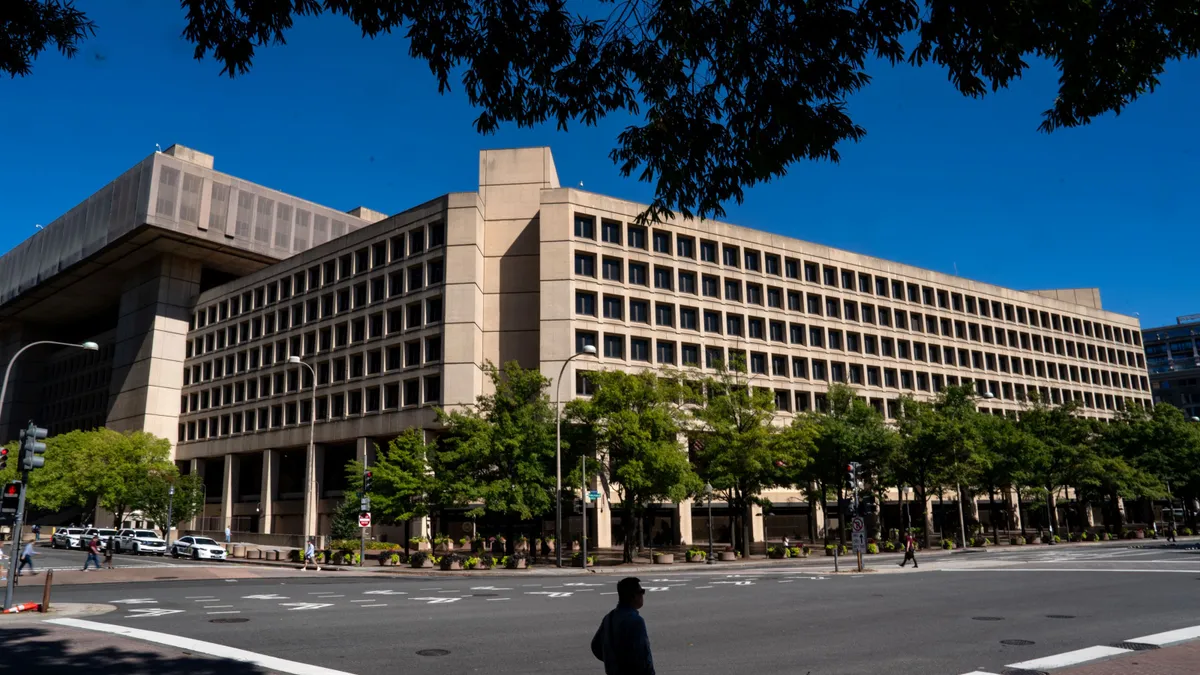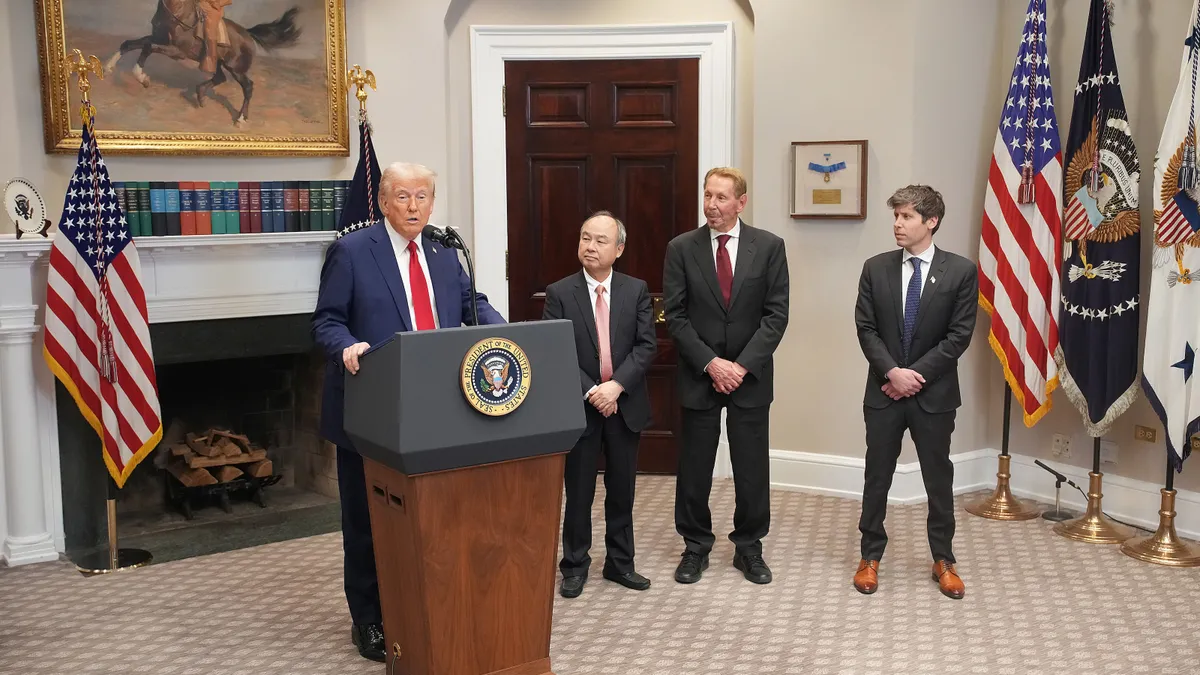This feature is a part of "The Dotted Line" series, which takes an in-depth look at the complex legal landscape of the construction industry. To view the entire series, click here.
The American Institute of Architects' standardized contract series is widely used across the construction industry, in addition to options from competitors like ConsensusDocs and the Design Build Institute of America.
When the AIA issues revisions to its contract documents every 10 years, it garners a good deal of attention, as these changes can impact all project stakeholders.
As for this cycle's revamp, according to the experts, here are the changes that contractors need to know.
Clarification of the architect's role as "initial decision maker"
One of the hallmark elements of AIA contracts is that, by default, the architect is the initial decision maker. Introduced in the A201-2007 revision, the AIA specified that the architect is the first stop in claims resolution between the parties on a construction project. Because the architect is almost always paid by the owner, that provision raised some contractors' eyebrows.
In an acknowledgment of that question of fairness, the AIA has added into the contract documents that the architect must make their decisions without favoritism to either the owner or contractor.
That feature, as well as others that give architects a significant hand in certain construction aspects of a project, are not always suitable, according to Alex Ferrini, partner at Olshan Frome Wolosky in New York.
Contracts that have architects recommending an action that a contractor should take in relation to its work or what constitutes a reasonable delay are not always fitting, according to Ferrini. "On some projects it's appropriate," he said, "but that's a very small slice of the market. If you have a homeowner who hires an architect [to act as] an agent and advisor, it would be appropriate."
In addition, Steve Cvitanovic, co-chair of the construction law practice group at Haight Brown & Bonesteel in California, said that such a hard line about passing everything by the architect is a throwback to a time when possibly the only person on the project with a formal education was the architect. "Architects had additional training and schooling, and the general contractor brought muscle," he said. "But today's building contractors and engineers and managers have advanced degrees."
Michelle Schaap, attorney at Chiesa Shahinian & Giantomasi in New Jersey, added that the contracts have also been rewritten to make direct communication between the owner and contractor easier but still require the architect to be kept advised of any activity related to their responsibilities. The previous version required that all communication go through the architect, according to Schaap.
Insurance and bonds
Another significant change in the revised documents is the fact that most insurance provisions are now in an exhibit to the agreement, which also offers additional detail related to contractors' risk.
Cvitanovic said this was the best improvement to the documents, as it makes the resources easier to use. Article 11, which dealt with insurance and bonds in the 2007 version, was often modified heavily or eliminated outright in favor of either the general contractor's, owner's or subcontractor's insurance requirements, according to Cvitanovic.
He said the new version "brings transparency in a very easy and understandable way about what their obligations are."
Ferrini added, "They did a much better job describing what coverage everyone should be thinking about."
Schaap said that pulling the insurance requirements out of the main contract will make the document easier to revise if changes are needed before the next 10-year revision cycle.
Retainage
The new forms also address a topic with which many commercial contractors are familiar — retainage. This is a portion of payment withheld from a contractor's check to cover any deficiencies down the road. Typically, the contractor holds the same percentage from subcontractors until they receive final payment.
Retainage barely got a mention in the 2007 version, but Ferrini said there's a new section devoted to prompting questions around the subject. What if a contractor is complete early in the project? Do they have to wait until the landscaping is done to collect the balance due? What is a fair percentage?
"They finally recognized everyone talks about this," Ferrini said. "It's good for them to provide a guide."
Termination fee
Sometimes a contractor just isn't a good fit for a project, and that might not become apparent until work is already underway. This is where termination for convenience comes in. Owners can say goodbye to a general contractor at any time. The same goes for subcontractors who have a contract with the general contractor.
In the 2017 contracts, payment for that decision has changed. "Not only did a contractor get paid up to the termination, but they got what they would have [made] in profit and overhead," Schaap said. "Now you get a termination fee."
Ferrini said owners would routinely strike the older provision, and it was a difficult sum to calculate. The blank space in the form, where the fee is to be entered, he said, is intended as a starting place for negotiations and is an important prompt for further discussion.
Electronic transmission
The AIA has burst into the 21st century and acknowledged the use of electronic communications in the business world today, although Ferrini said the convenience is reserved for everyday communications. When it comes significant events like a notice of termination or default, those still must be made using certified mail, registered mail or courier services like Federal Express.
Better access to owner information
What was once a guessing game is now out in the open. "What I like about the new document is that the general contractor has better access to owner financials," Cvitanovic said. "[Contractors] have to make sure they're not in a situation with an owner who's not as liquid as they might think."
Sustainable projects exhibit
The AIA created a sustainable projects attachment that can be used with any of their contract agreements. According to the AIA, the purpose of the new form it to address the special risks and responsibilities involved with a sustainable project.
Schaap said the AIA is recognizing the growing importance of sustainability and green building, and the form covers even those who are not pursuing some green certification like LEED. However, if third-party certification is the goal, the AIA has recognized that as well, she said, and allows for the addition of consequences if the chosen certification is not achieved.
Takeaways from the process
Cvitanovic said the entire revision process leaves him with one big question: "Why did it take so long?" He added, "I realize that they like their 10-year update … but with rapidly evolving technology and the needs of the industry, I believe the AIA needs to revisit [the schedule]."
"I review these all the time and every one of them is marked up significantly," he said. "I'm not saying [more frequent] updates will do away with markups, but it could minimize some of them. Once we started having instantaneous communication to anywhere in the world … and an evolution of delivery methods, it put pressure on this document. We're making major revisions all the time."
Schaap said, "There are some notable revisions and some cleaning [the contract documents] up, making it more user friendly." However, she said there is one thing many people lose sight of when it comes to the AIA contracts, or any other documents for that matter.
"The most important thing people have to remember is that it's not written in blood," Schaap said. "It's a tool. You're allowed to change it. It's a form. You're allowed to revise it."
The Dotted Line series is brought to you by AIA Contract Documents®, a recognized leader in design and construction contracts. To learn more about their 200+ contracts, and to access free resources, visit their website here. AIA Contract Documents has no influence over Construction Dive's coverage within the articles, and content does not reflect the views or opinions of The American Institute of Architects, AIA Contract Documents or its employees.





















